On View
See Highlights From a Museum Show About New York’s Legacy in Art and Pop Culture, From De Niro’s ‘Raging Bull’ Robe to Alice Neel’s Harlem Scenes
'This Is New York' assembles more than 400 objects.
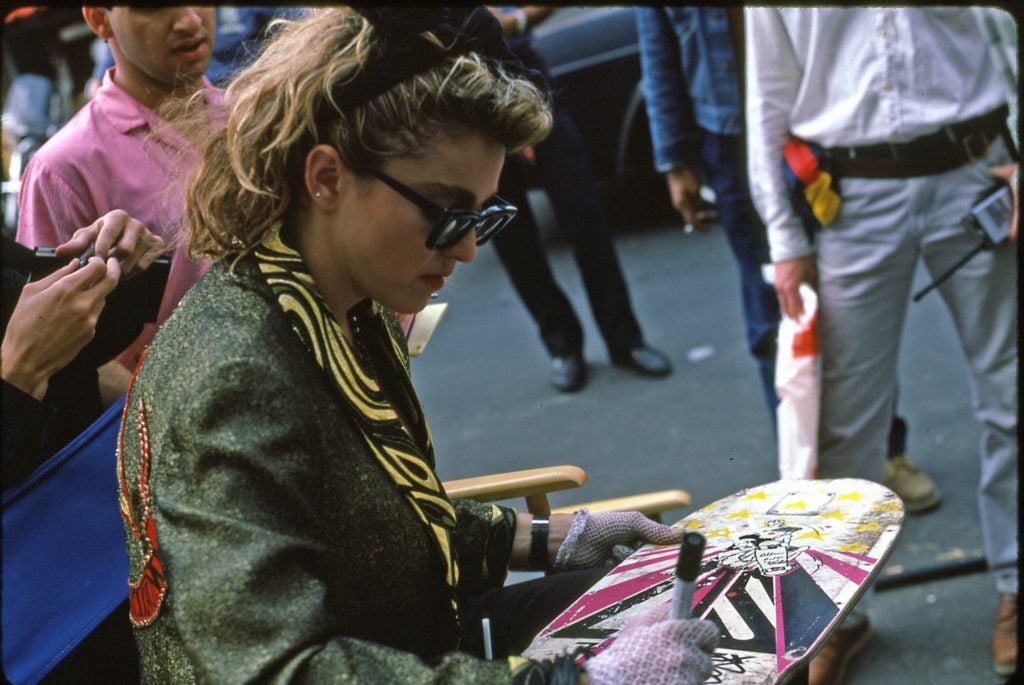
'This Is New York' assembles more than 400 objects.

Min Chen

When the Museum of the City of New York decided to mark its centennial with a massive show exploring what the city has meant to artists, let’s just say it did not lack for exhibits.
More than 400 objects have been assembled for “This Is New York: 100 Years of the City in Art and Pop Culture,” all capturing how the city has served as muse, setting, and subject for visual artists, filmmakers, writers, fashion designers, and musicians over the past century. The stories they have told in and about New York City have been as abundant as they are diverse.
“Nobody feels neutral about New York,” Sarah M. Henry, the museum’s chief curator and interim director, told Artnet News. “The warts-and-all quality to this observation and the ways in which artists have drawn attention to the flaws of New York is as much part of the story as the odes to the things that we love about the city.”
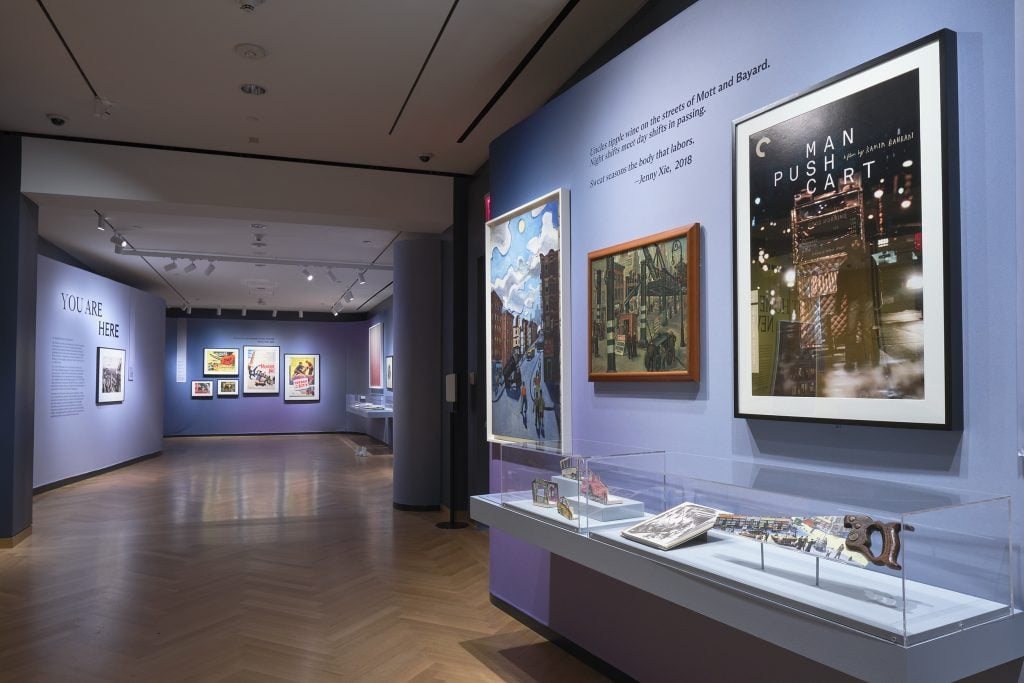
Installation view of “This Is New York: 100 Years of the City in Art and Pop Culture” at the Museum of the City of New York. Photo: Brad Farwell for Museum of the City of New York.
The show is divided into distinct segments.
Interactive exhibits dot the show, including a sound installation loaded with 100 songs inspired by the city’s five boroughs and a digital bookshelf, masterminded by design studio Dome Collective, where visitors can listen to books read by the likes of Matthew Broderick, Ronnie Chieng, and Tessa Thompson.
A highlight, though, is You Are Here, an installation that immerses viewers in more than 400 film scenes shot of and about New York. Do the Right Thing and Ghostbusters are represented, as are clips from Working Girl to Breakfast at Tiffany’s to Midnight Cowboy, all cleverly and thematically stitched together by production company RadicalMedia.
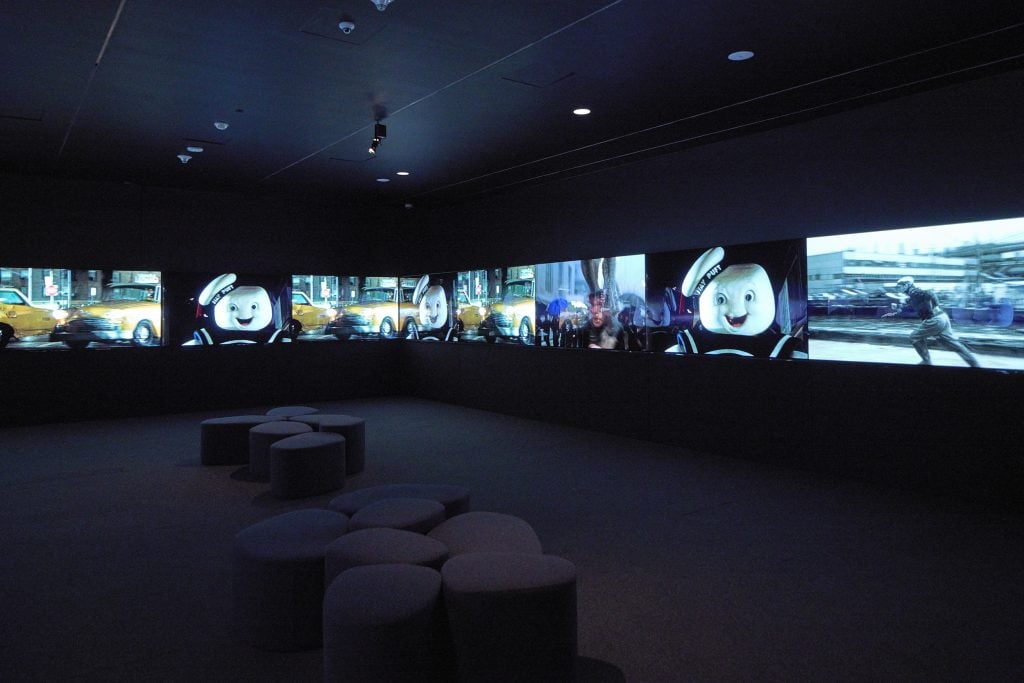
Installation view of “This Is New York: 100 Years of the City in Art and Pop Culture” at the Museum of the City of New York. Photo: Brad Farwell for Museum of the City of New York.
A vast project, MCNY planned and pulled the exhibition together over five years, a period that overlapped with 2020’s lockdowns. According to Henry, it was a moment that surfaced for the museum team how New York’s distinct qualities could also make it most vulnerable to a pandemic. That discrepant view, as the show points out, is just the tip of the complexity of inhabiting—let’s face it—the greatest city in the world.
“We’re not the visitor center and New York doesn’t need it either,” said Henry. “What the exhibition is about is these conflicting perspectives, experiences, and emotions that a place as complicated and challenging as New York City can evoke.”
Here are eight unmissable highlights from the exhibition.
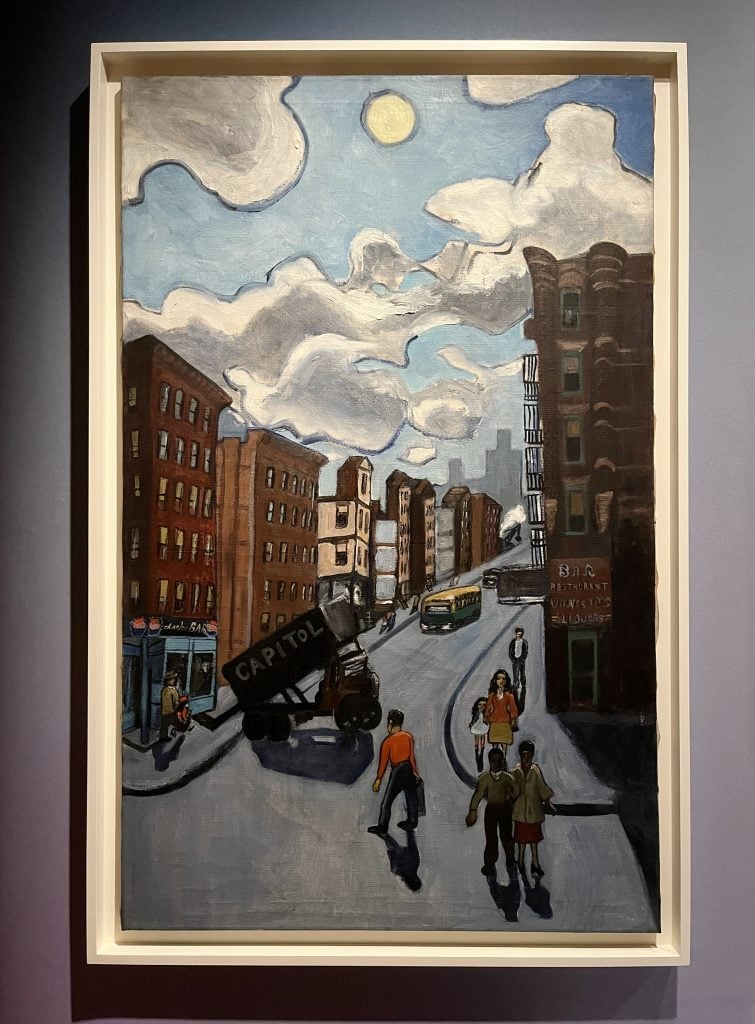
Alice Neel, 108th and Madison (1945), at “This Is New York: 100 Years of the City in Art and Pop Culture.” Photo: Min Chen.
“I love you Harlem,” artist Alice Neel wrote in her journal in the early 1940s, “for the rich deep vein of human feeling buried under your fire engines.” That affection for her neighborhood, Neel would also paint into her street scenes that immortalized El Barrio, she wrote, for “your poverty and your loves.” This particular oil depicts the city’s sanitation workers going about their job not far from the MCNY itself.

Robe, trunks, and boxing gloves from Raging Bull at “This Is New York: 100 Years of the City in Art and Pop Culture.” Photo: Min Chen.
One of the most striking costume choices in Martin Scorsese’s Oscar-sweeping film, this ensemble, designed by John Boxer and Richard Bruno, was most prominently seen in scenes recreating boxer Jake LaMotta’s bouts at Madison Square Garden. It will only be on view for three months.
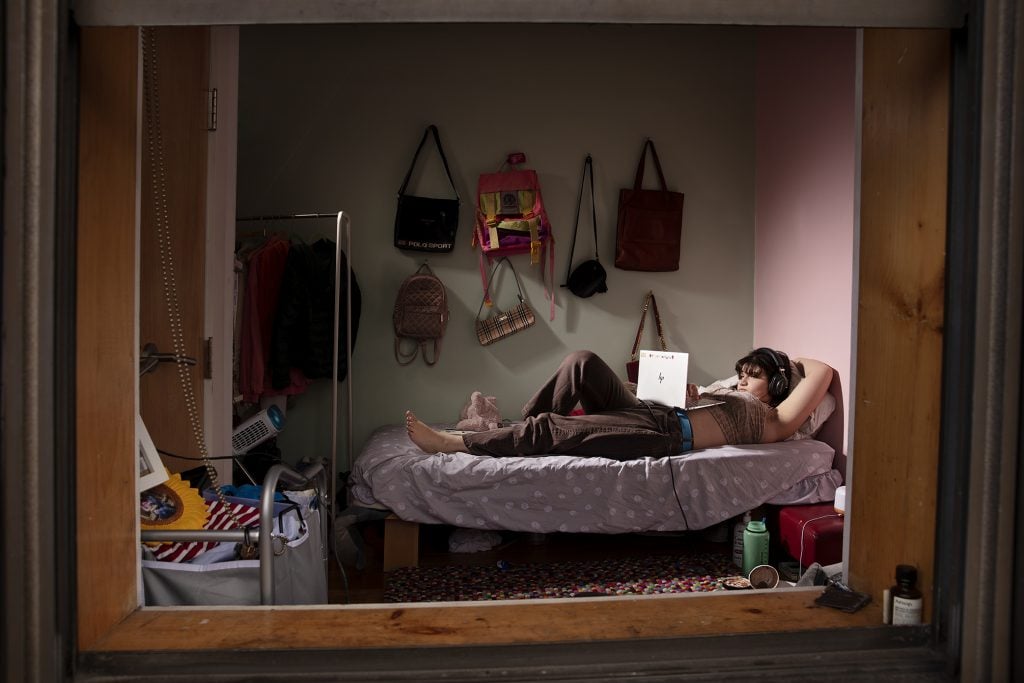
Elinor Carucci, Emma in Her Room, Shelter-in-Place Time, Corona Days (2020). Courtesy Edwynn Houk Gallery.
Over lockdown, photographer Elinor Carucci turned her camera onto her own family in isolation, capturing her husband and teenage twins, Eden and Emma (seen here), sheltering in place in their 950-square-foot apartment. Her series would illustrate not just an individual, but a shared reality—further mirrored in Kadir Nelson’s Homecoming (2021), a painting, included in the show, that depicts the bliss of a post-vax reunion.
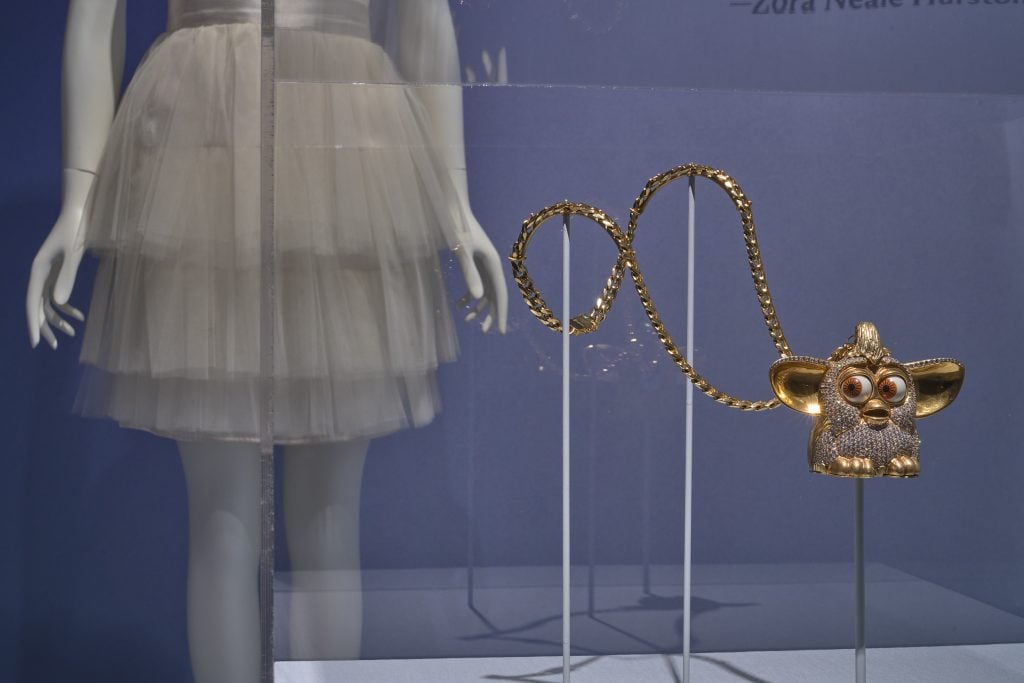
Pendant from Uncut Gems, with the Carrie Bradshaw tutu ensemble from Sex and the City. Photo: Brad Farwell for Museum of the City of New York.
You know that highly meme-ed scene from Uncut Gems where Adam Sandler, playing a jeweler, holds up this diamond-encrusted Furby pendant and declares, “I started this shit”? Well, that object is here, the work of designer Catherine Miller who oversaw the molding, casting, and setting by hand of the 14-carat gems on the instantly iconic medallion.
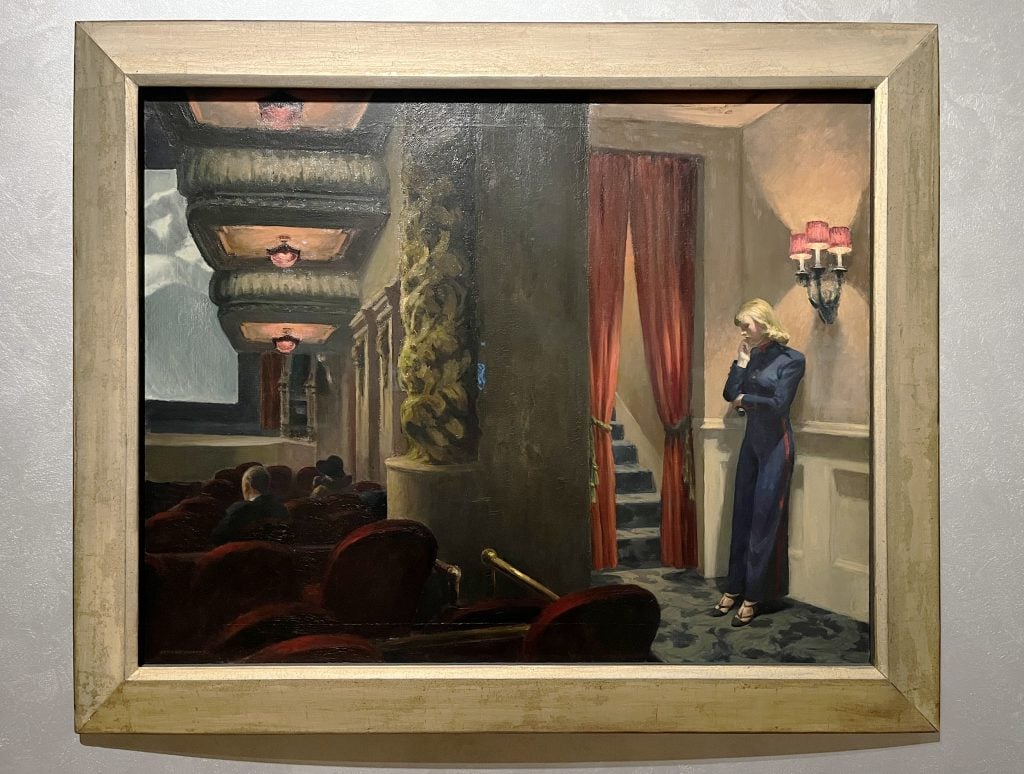
Edward Hopper, New York Movie (1939) at “This Is New York: 100 Years of the City in Art and Pop Culture.” Photo: Min Chen.
One of Hopper’s lesser-seen works, on loan from MoMA, this painting depicts an usher, pensive against the backdrop of an opulent movie theater. The painter’s signatures are in full bloom here—from the visual sumptuousness of the New York setting to the haunted atmosphere of urban alienation.
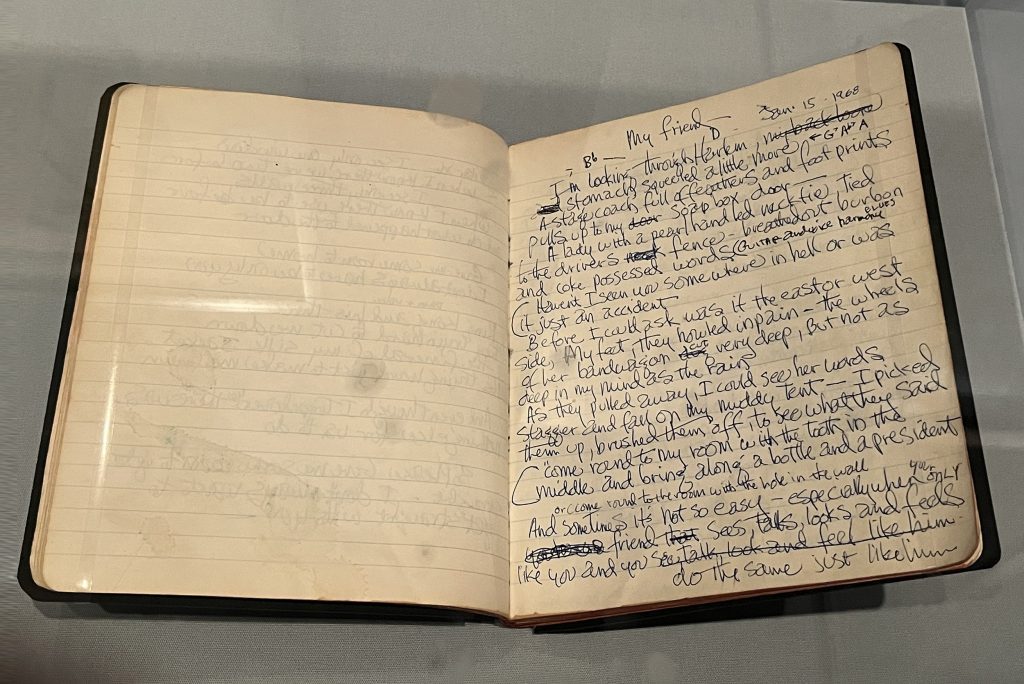
Jimi Hendrix’s handwritten lyrics. Photo: Min Chen.
Hendrix lived in New York City for four years starting in 1966, during which he left his mark on studios like Electric Lady and apartments in Greenwich Village and the Upper East Side. The city, too, left its mark on the musician, who, in his song “My Friend” transformed Harlem into a fantastical setting for an encounter with “a stagecoach full of feathers and footprints.”
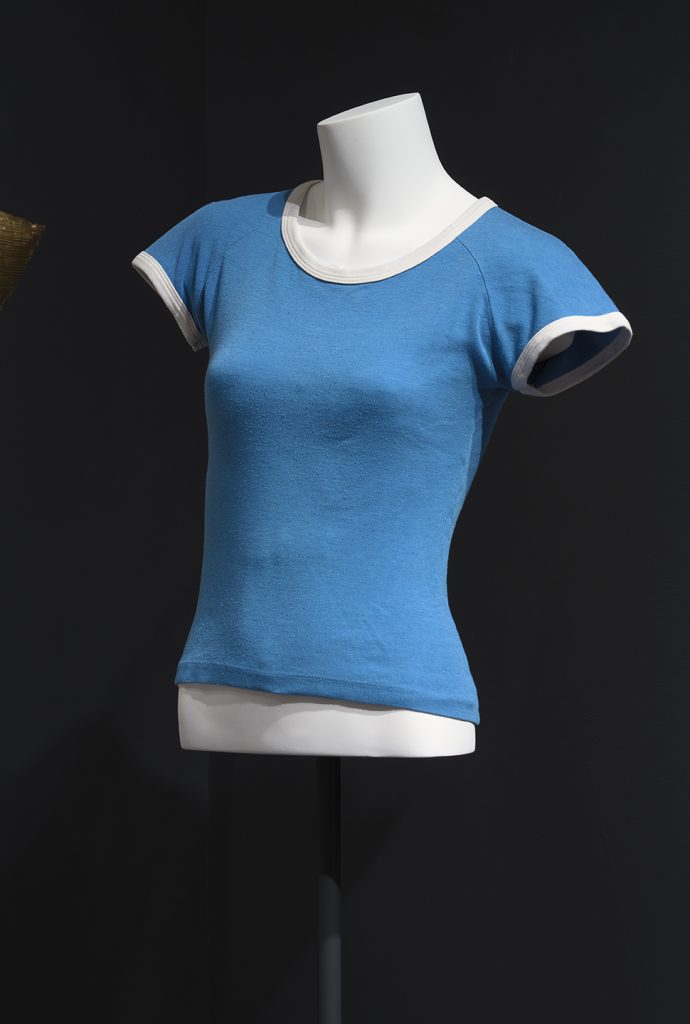
T-shirt from Kids. Photo: Brad Farwell for Museum of the City of New York.
Straight from Sevigny’s own collection, this T-shirt saw her character Jennie through one life-changing day of hard partying, drug use, sex, and skateboarding in Larry Clark’s seminal film Kids. Sevigny calls the item one of her “most treasured possessions.”
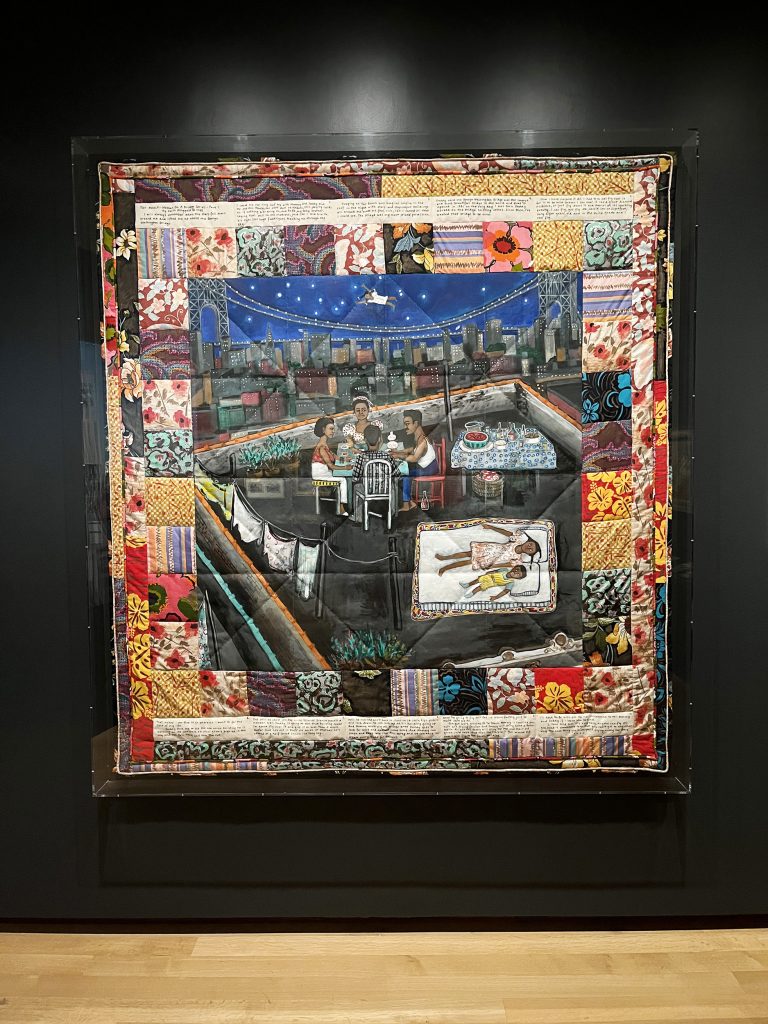
Faith Ringgold, Tar Beach (1988) at “This Is New York: 100 Years of the City in Art and Pop Culture.” Photo: Min Chen.
Ringgold’s story quilt, which narrates the creative reveries of the artist’s eight-year-old heroine Cassie Louise Lightfoot, is included here for its framing of a Harlem rooftop as a site for socializing, dreaming—and flight. “My women are actually flying,” Ringgold said of her “Women on a Bridge” series, of which this quilt forms a part. “They are just free, totally.”
“This Is New York: 100 Years of the City in Art and Pop Culture” is on view at the Museum of the City of New York, 1220 5th Ave, New York, through June 21, 2024.